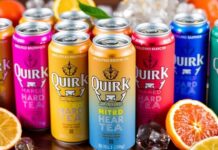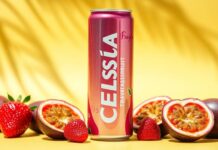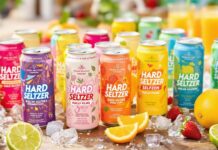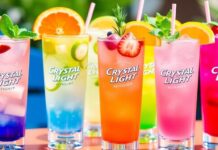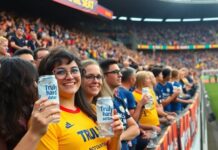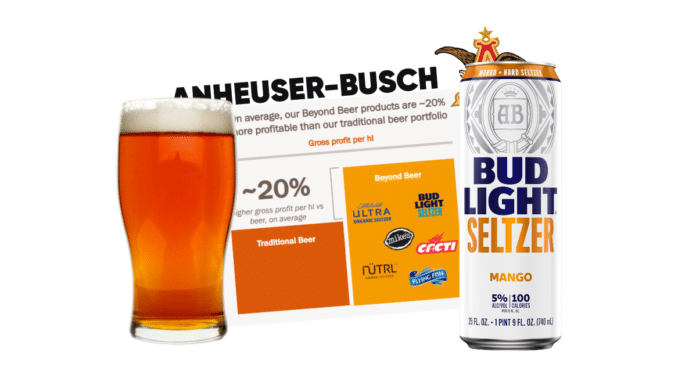Hard seltzers are dominating the alcoholic beverage industry. The hard seltzer market reached $3.8 billion last year and is projected to hit $11 billion by 2027. We examine the profitability of the popular beverage and the approach by Anheuser-Busch (NYSE: BUD), Molson Coors (NYSE: TAP), Constellation Brands (NYSE: STZ), and Boston Beer (NYSE: SAM).
Hard seltzer beverages were the unofficial drinks of quarantine and continue to grow in popularity as lock downs ease and venues reopen. Celebrities are launching their own seltzer lines to major fanfare. Brewers are scrambling to put out new varieties of the bubbly beverage and simultaneously struggling to keep up with production demand. Alcohol companies are reprioritizing and publicly declaring their commitment to the Beyond Beer category by funneling funds into manufacturing and marketing.
These reasons alone should be compelling enough to keep big brewers eager to pursue hard seltzer, but if the titans of the alcohol industry still need convincing, they need not look any further than the profit margins of their most popular products. Beyond Beer products, like hard seltzers and ready-to-drink (RTD) canned cocktails, have a significantly higher gross profit margin than traditional beer, making them the obvious choice for brewers to pump money and resources into.
Hard Seltzer is More Profitable Than Beer
During a recent Anheuser-Busch earnings call the company divulged that their Beyond Beer line up is, on average, about 20% more profitable than their beer products. On the same call AB InBev CEO, Carlos Brito, stated, “The growth of core plus and premium portfolio, including Beyond Beer, that will continue to positively impact our net revenue and dollar margins, that will be key…”
The company reported an extremely strong first quarter this year, achieving profit growth of 14.2% and top-line growth of 17.2%. Volume for Q1 was greater than 2019 highs reported before the pandemic.
Remove the Hops and Save $
Why is hard seltzer more profitable than beer? The likely culprit is the rising cost of hops, the flowers that give beer its complex aroma and bitterness flavor. The price for hops was $3.14 per pound in 2011. That number almost doubled to $5.97 last year.
Hops are a key component in beer production, and every time their price per pound increases, beer company’s profit margins decrease. For an average 6-pack, the hops themselves could account for as much as $0.53 of the cost. That’s without taking into consideration the machinery, processing and labor needed to work with the hops.
Additionally, hops need to be planted sometimes as much as two years before they make their way to breweries. The cost of careful cultivation and harvesting is passed on to brewers.
The rising popularity of IPAs with consumers meant an increase in hop ingredients, which attributed to ever rising product costs.
As important as hops are for beer, they are an ingredient that is completely absent from hard seltzer. Since hard seltzers utilize no hops (with a few exceptions that are yet unproven), but still retail for as much as — if not more than — beer, they are by far the more profitable option for beverage alcohol companies to produce and sell.
Anheuser-Busch Beyond Beer
Anheuser-Busch certainly has hard seltzers and RTD canned cocktails to thank for their impressive quarter. With quarantine shuttering bars and restaurants across the country, on-premise beer sales suffered tremendously and alcohol beverage companies leaned heavily on RTD beverages to offset losses.
Cacti, rapper Travis Scott’s tequila-inspired hard seltzer, reported first week sales higher than any other seltzer product in AB InBev’s line up to date. According to Nielsen, Bud Light Seltzer became the third most popular seltzer on the market less than a month after its launch, coming in just behind Truly and White Claw. Bud Light Seltzer recently launched in Canada after Canadians flooded social media with requests for the beverage.
The Beyond Beer strategy is clearly working for Anheuser-Busch. With an ever growing repertoire that includes heavy-hitters like Bud Light Seltzer, Michelob Ultra Organic Seltzer, Bon V!V, Ritas, Cutwater Spirits and Cacti, the company boasts nearly 90 total Beyond Beer brands in approximately 40 countries worldwide.
Earlier this year the alcohol giant announced plans to invest $1 billion into US manufacturing facilities in order to bolster hard seltzer production and keep up with skyrocketing product demand. The company points out, “Our seltzer portfolio continues to grow ahead of the industry according to IRI, and we delivered triple-digit growth of our canned cocktail brand, Cutwater.”
But Anheuser-Busch isn’t the only company relying on Beyond Beer profit margins in the wake of the pandemic.
Molson Coors Beyond Beer
Molson Coors beat both top and bottom analyst estimates during the first quarter of this year. The company’s portfolio includes widely popular seltzers such as Coors Hard Seltzer and Vizzy, and a recent addition, Proof Point RTD canned cocktails.
Coors Seltzer sold upwards of 500,000 cases during its first month on the market and Nielsen ranked Vizzy #8 on its Top Ten Growth Brand List. Grammy-nominated rapper Meek Mills posted a video earlier this month where he can be seen enjoying Proof Point at a party with friends. The video has been viewed hundreds of thousands of times.
Molson Coors also recently forged a distribution deal with The Coca-Cola Company (NYSE: KO). In that arrangement, the company is responsible for the marketing and distribution of Topo Chico Hard Seltzer, Coke’s only alcoholic beverage.
Molson Coors CEO Gavin Hattersley is more than willing to attribute much of this past quarter’s success to the company’s catalog of hard seltzer, “Net sales revenue per hectoliter in our largest market, the U.S., was up 4.1%, as we took substantial steps toward our hard seltzer ambition, driven by the launch of Topo Chico Hard Seltzer. Vizzy and Coors Seltzer are top-five hard seltzers with some of Canada’s leading retailers, and we have launched the Three Fold hard seltzer brand in the U.K. and are launching the Wai brand in Central and Eastern Europe in the coming weeks.”
Like Anheuser-Busch, Molson Coors recently invested millions of dollars towards upgrading their equipment in the hopes of boosting hard seltzer output by 400%. The company even went as far as changing their name from Molson Coors Brewing Company to Molson Coors Beverage Company, further signaling a shift in priorities.
Constellation Brands Beyond Beer
Constellation Brands also beat market estimates in their most recent quarter. The company exceeded consensus forecasts by 25%, coming in at $1.95 per share. Their revenue increased by 2.63% as well, when compared to this time last year. Corona Hard Seltzer’s improved sales were a major reason for the company’s jump in numbers.
Constellation also recently released Two Lane Hard Seltzer, a brand boosted by the endorsement of country singer Luke Bryan. The company recently announced its increased investments in the Daleville, VA, plant to make more of the Two Lane and more of its Beyond Beer portfolio.
Florida-based Funky Buddha, a craft beer brewer acquired by Constellation in 2017, also now had hard seltzer under its flag. The premium seltzer lineup currently offers a multitude of flavor varieties, all brewed from cane sugar and agave. The tropical mix pack includes Tangy Kiwi Tangerine, Bright Starfruit, Exotic Passionfruit Dragonfruit, and Smooth Pineapple Coconut.
Boston (Beyond) Beer
Boston Beer is another public company which has hard seltzer to thank for its remarkable first quarter sales. Boston Beer brand Truly helped the company close their Q1 reporting a profit of $5.26 a share, or $65.6 million. That’s almost double what they were projected to report and more than triple what the company reported at the end of 2020’s first quarter.
Boston Beer CEO Dave Burwick explained, “The Truly brand has now reached a market share of over 28%, accounting for approximately 40% of all growth cases in the hard-seltzer category, which is two times greater than the next largest growth brand.”
In 2020 Samuel Adams, Dogfish Head and Angry Orchard, three of the company’s largest brands, saw declined depletions due to the pandemic forcing on-premise sales to a halt. However, the company still enjoyed a 37% growth in depletions thanks to Truly Hard Seltzer and Twisted Tea.
If profit margins continue to favor hard seltzers and consumers continue to demand them, it is almost certain that brewers will remain focused on the production and marketing of their Beyond Beer offerings.
- Seltzer Category Expanded for 2022 Craft Beer Marketing Awards - February 11, 2022
- Drifter Expands Portfolio with Nordic-Style Gin - January 18, 2022
- Tilray Acquires Green Flash and Alpine Beer - December 22, 2021


